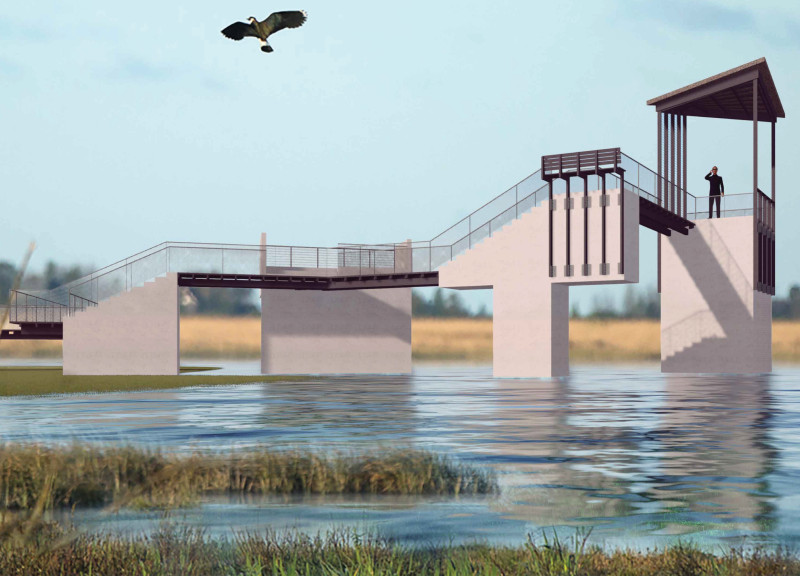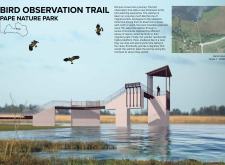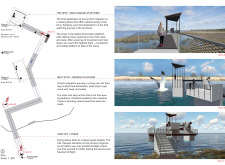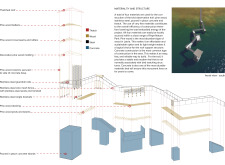5 key facts about this project
## Project Overview
The Bird Observation Trail, located in Pape Nature Park near Riga, Latvia, is designed to enhance the birdwatching experience while immersing visitors in the natural surroundings. The concept aims to mirror the migratory paths of birds, providing various vantage points for enthusiasts to engage with local wildlife. Functionality and aesthetic resonance with the environment are central to the design intent.
### Journey Structure
The design incorporates a sequence of interconnected platforms that guide users through the site while echoing the migratory journey of birds. The trail begins with ascending steps that simulate a bird's ascent, leading to strategic viewing areas. These areas include rest stops for reflection and a main viewing platform, symbolically referred to as ‘The Nest,’ which offers expansive views of the landscape, representative of a resting point in flight.
### Materiality and Design Outcomes
The architectural design employs a combination of locally sourced materials and modern construction techniques to ensure durability and sustainability.
Key materials include:
- **Thatch**: Utilized in the roof structure, this material reflects local architectural traditions while providing lightweight coverage.
- **Pine Wood**: Serving as the primary structural element, it is affordable, sustainable, and locally sourced, supporting ecological practices.
- **Stainless Steel**: Incorporated in guardrails and structural supports, it contributes modern stability to the design.
- **Concrete**: Used for the foundation, it ensures the robustness and longevity required for outdoor constructs.
Noteworthy features include a hyperbolic paraboloid roof, which innovatively reinterprets traditional thatched roofing while also providing shelter. Elevated platforms are strategically designed to optimize viewing angles and blend seamlessly with the natural landscape, enhancing the sensory experience for birdwatchers. The integration of these elements promotes ecological awareness and fosters a deeper connection between visitors and the environment.





















































